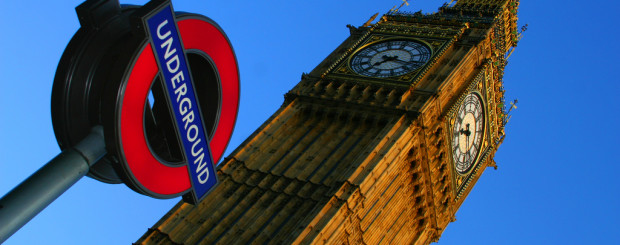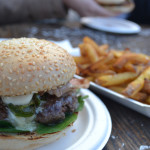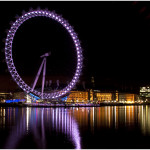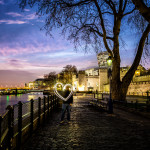8 Interesting Things to Know About London
London is an ancient city with a long and eventful history that stretches from its official formation by the Romans in around AD50 to the present day multicultural metropolis. Below is just a small taste of the many fascinating things to discover in and about the capital.
1. Population and People
In terms of population, London is the largest city proper in the European Union. For a time it was the largest city in the world, until Tokyo took over that title in 1925. As of 2013, the population of London was just over 8.3 million.
London is a multicultural city with the second largest immigrant population in the world (after New York). In 2011, over 30% of the population (nearly 3 million people) were born overseas. Apart from native British, you are most likely to encounter people born in India, Poland and Ireland, and a 2005 survey found that over 300 languages were spoken in London.
In 2011, the biggest faith group were Christians (48.4%) followed by the non-religious (20.7%) and Muslims (12.4%).
2. Big Ben
Even native British people often think that Big Ben is the big clock tower attached to the Houses of Parliament. In fact, Big Ben refers to the 13 and a half tonne tin and copper bell within. The clock is called the Great Westminster Clock and works by a system of gears, cables and a pendulum.
The clock team, led by the Keeper of the Great Clock, keep the clock accurate to within a second by adding pennies to the pendulum. They also are responsible for winding the mechanism (three times a week) and adjusting for BST. Big Ben has three birthdays, one marking the anniversary of the first time it chimed (on 11th July 1859). Its unmistakeable tone has become synonymous with London ever since.
3. Legendary foundations
The Roman foundation of London (as Londinium) in AD50 is the most widely accepted theory – but it is not the only one! In a city as old as London, it is not surprising that myths abound, and one such myth attributes its foundation to the Roman consul Brutus of Troy. It is claimed that he named the city Troia Nova (New Troy), and that his name lies behind the very name of Britain itself.
It is even said that the enigmatic ‘London Stone’, displayed in the wall of a building just opposite the Cannon Street train station, was once a palladium – a protective talisman used by the Trojans. This explanation is largely dismissed as fantasy, but the origin of the London stone remains an intriguing mystery.
4. The London Eye
The London Eye (or Millennium Wheel) is the iconic Ferris wheel located on the South Bank of the Thames. It was completed in March 2000 after seven years of hard work involving employees from five different countries. The wheel can carry 800 passengers on each of its 30 minute revolutions, affording 25 mile (40km) views of the city – as far as Windsor Palace on a good day. There are 30 capsules, each weighing 10 tonnes, and the wheel rotates at a speed of 26cm per second, slow enough to enable passengers to alight while in motion.
When it was built, the London Eye was the seventh tallest structure in London and the world’s biggest Ferris Wheel. It is currently (2014) the fourth largest Ferris Wheel and doesn’t even make the top twenty tallest London structures list! Incidentally, the Shard is now London’s tallest building (and the tallest in the EU)..
5. Religious buildings
London is the place to come if you enjoy visiting churches, chapels, abbeys and cathedrals with fantastic and varied architecture from numerous denominations. Highlights include:
- St Bride’s church on Fleet Street is where the traditional tiered wedding cake design comes from.
- Ancient Southwark Cathedral, near to Borough Market, is a favourite of businesspeople on their lunch break.
- Westminster Abbey is no longer an abbey but a church. However, it is a stunning building that must top any ‘To Do’ list. It is the traditional place of coronation and burial for English royalty.
- St Paul’s Cathedral, at 364 feet (111m) is the tallest place of worship in London and was the tallest building on the London skyline in the 1700s.
6. Shakespeare’s Globe
The original Globe Theatre was built by Richard Burbage in 1599 in Southwark, on the South Bank of the Thames using reclaimed timber. It was a 100 feet octagonal open-air theatre with a roof jutting out over the seating area which spanned three levels and sat 300.
Around the stage was ‘the Pit’ where ‘groundlings’ could pay a penny to watch; they surrounded a rectangular platform known as the apron. The type of the current play was advertised with coloured flags: red for history, black for tragedy and white for comedy.
The original Globe burnt down in 1613, victim of a ‘special effects’ disaster, but was rebuilt a year later. The Puritans shut it down in 1642 and the building became housing two years later. A replica was constructed in 1997, close to the site of the original.
7. The London Underground
London is, of course, noted for its underground railway system, referred to as ‘the Tube.’ It was the first underground system in the world and, with 250 miles of track, is still the largest (and the costliest).
The Tube’s 11 lines take in 270 stations, and it carried a staggering 1.23 billion passengers in 2012/13. The most popular route is between Leicester Square and Covent Garden – even though it is quicker to walk the distance. Harry Beck’s famous Tube map design was voted a national design icon in 2006.
8. The Great Fire of London
In September1666, much of the medieval City of London was devastated by a fire which is said to have started at a bakery on Pudding Lane. The fire soon blazed out of control, destroying over 13 000 houses and 87 churches although the death toll is thought to have been low. The fire paved the way for a redesign of some of the city’s layout and buildings, including a new baroque makeover for the ancient St Paul’s Cathedral.








